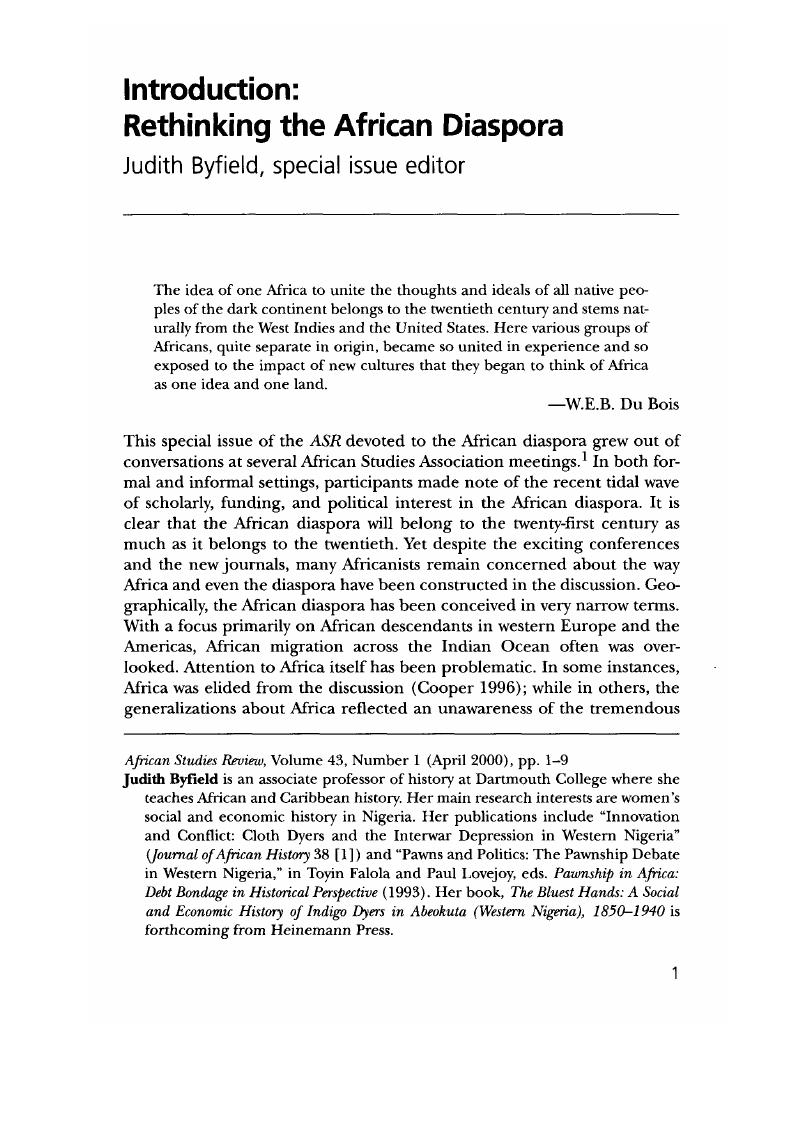Crossref Citations
This article has been cited by the following publications. This list is generated based on data provided by Crossref.
Zack‐Williams, A B
and
Mohan, Giles
2002.
Editorial: Africa, the African diaspora & development.
Review of African Political Economy,
Vol. 29,
Issue. 92,
Mohan, Giles
and
Zack‐Williams, A B
2002.
Globalisation from below: conceptualising the role of the African diasporas in africa's development.
Review of African Political Economy,
Vol. 29,
Issue. 92,
Alpers, Edward A.
and
Roberts, Allen F.
2002.
What is African Studies? Some Reflections.
African Issues,
Vol. 30,
Issue. 2,
p.
11.
Muteshi,, Jacinta K.
2003.
Constructing consciousness: Diasporic remembrances and imagining Africa in late modernity.
Critical Arts,
Vol. 17,
Issue. 1-2,
p.
36.
Naylor, Celia E.
2006.
Crossing Waters, Crossing Worlds.
p.
145.
Kanter, Deborah E.
2006.
Crossing Waters, Crossing Worlds.
p.
164.
Kennedy, Virginia
2006.
Crossing Waters, Crossing Worlds.
p.
196.
Walters, Wendy S.
2006.
Crossing Waters, Crossing Worlds.
p.
226.
Chang, David A. Y. O.
2006.
Crossing Waters, Crossing Worlds.
p.
80.
Collins, Robert Keith
2006.
Crossing Waters, Crossing Worlds.
p.
260.
Warrior, Robert
2006.
Crossing Waters, Crossing Worlds.
p.
181.
2006.
Crossing Waters, Crossing Worlds.
p.
327.
Kohnert, Dirk
2006.
Cultures of Innovation of the African Poor.
SSRN Electronic Journal,
Krauthamer, Barbara
2006.
Crossing Waters, Crossing Worlds.
p.
100.
Redmond, Eugene B.
2006.
Crossing Waters, Crossing Worlds.
p.
25.
Gueye, Abdoulaye
2006.
De la diaspora noire : enseignements du contexte français.
Revue européenne des migrations internationales,
Vol. 22,
Issue. 1,
p.
11.
Mohan, Giles
2006.
Embedded Cosmopolitanism and the Politics of Obligation: The Ghanaian Diaspora and Development.
Environment and Planning A: Economy and Space,
Vol. 38,
Issue. 5,
p.
867.
Micco, Melinda
2006.
Crossing Waters, Crossing Worlds.
p.
121.
Hill, Roberta J.
2006.
Crossing Waters, Crossing Worlds.
p.
309.
Buffalo, Tamara
2006.
Crossing Waters, Crossing Worlds.
p.
218.



